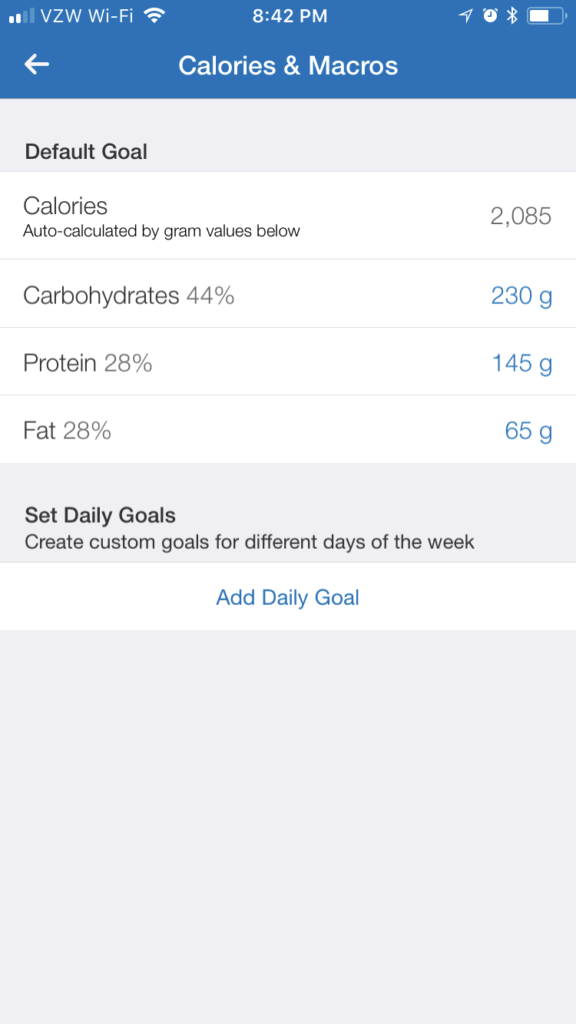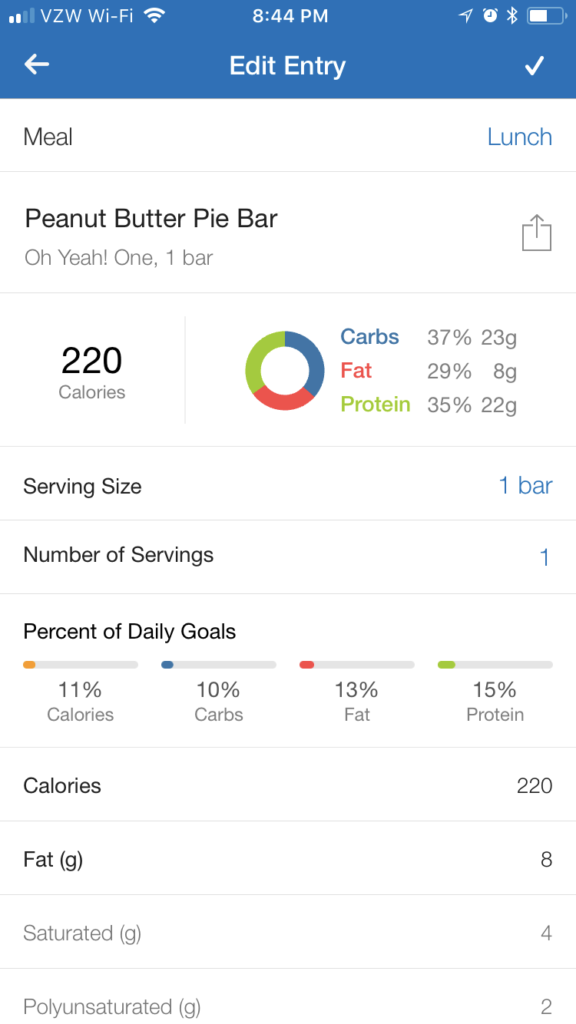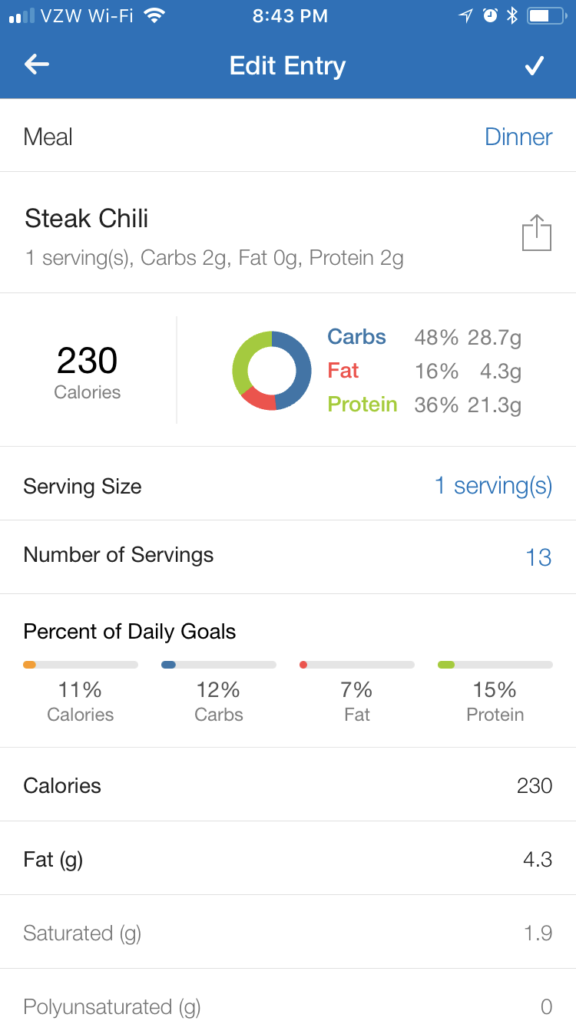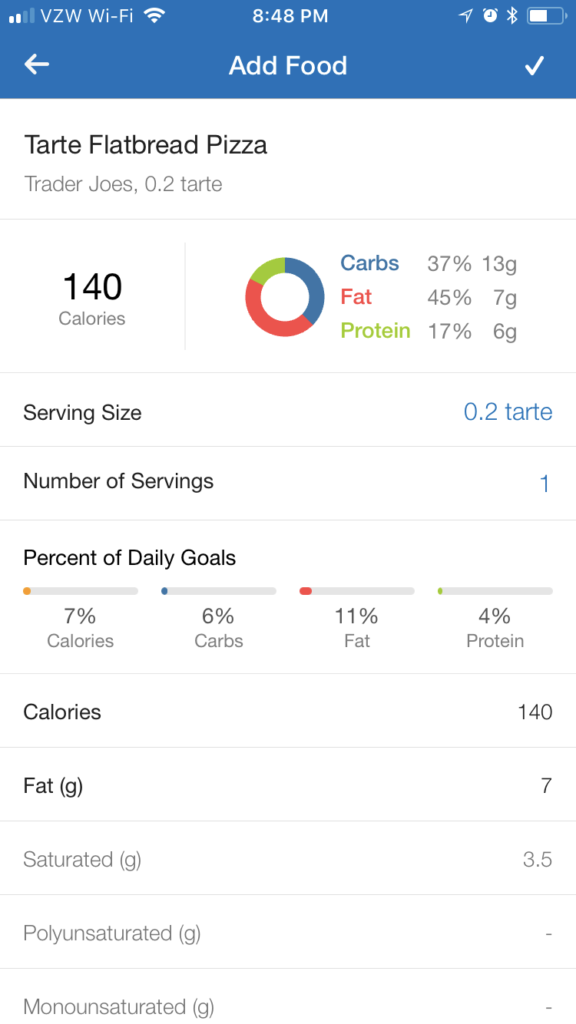I spent two hours at Trader Joe’s today reading nutrition labels. Two hours. (Confession- it wasn’t so bad. I love grocery shopping, especially when my 5 year old is occupied at school!) I actually really love gathering and compiling information, so I was happy to do it! I even found a few things I haven’t tried yet- that always feels like a lottery win to me! And who doesn’t love winning the food lottery?!?

I started this post with the intention of detailing how I plan out my macros for the day, but realized I needed to explain this whole macro business first. Specifically macro friendly and what the heck that means.
So, let’s talk really quickly about the catchphrase “macro friendly.” It’s a buzzword that’s really pretty meaningless until you put it into context. Macronutrients, or “macros” are are the components that make up all of our food- protein, fats and carbs. Macro friendly means what then? How is a macro friendly? It doesn’t mean much unless you understand that optimal nutrition means finding the correct balance of macros to reach your goals. Someone who’s trying to put on muscle is going to have very different macro needs than someone working to drop their body fat percentage. So a food that’s “macro friendly” to one person may not be so friendly to another.
I like to think of a food that is easy to measure and track as macro friendly. For example, a pre-portioned bag of baby carrots is pretty easy to measure and count. A crab cake dining out? Not so much. An individual serving of protein oatmeal- simple and clear. Scan the label, enter into My Fitness Pal, eat. Homemade lasagna? Pretty near impossible. Chicken wings? Forget it. When I hear macro friendly, that’s how I like to think- what can I easily measure and log into my journal? Friendly in this case means measurable portions and simple, clearly listed ingredients.
Another (and most common) consensus for “macro friendly” tends to be a food that’s high in protein, but low fat and carbs. Essentially, macro friendly can be synonymous with high protein or low carb. Most people don’t have a problem meeting their carbs and fats, but have a hard time filling out their proteins without going over the other two macros. So it makes sense that a high protein, low carb and low fat food would be considered macro friendly. I feel it’s valuable to note that some people also have a hard time getting their carbs in, believe it or not. Someone who is working to build muscle may be eating 300+ grams of carbs a day. For that person, macro friendly may mean a food that’s just carbs, like rice, oatmeal, or cereal.
A third- and more complex- way to think about “macro friendly” is how it fits into your macro needs. How many other adjustments are you going to make throughout the day to make that food fit? Are you going to have to eat 12 egg whites for dinner to fit that pizza in for lunch? If you’ve been doing this for a while, you know what I mean! You can call it a frittata all you want, but you had a pan of egg whites with spinach and topped it with Frank’s Red Hot sauce. A simple way to figure out if a food meets your specific needs is to check out the percentages. Find your macro ratio. Go under “goals” on My Fitness Pal and you’ll see them there. If you know your macro ratio, when you enter a food, look at the percentages for a serving. Do they line up with yours? Can you easily add to that food to make it a balanced meal? If the answer is yes, you’ve found a macro friendly food.

This is my daily goal. You can see the percentages along the left side.

Here’s what I had for dinner. The chili was an easy recipe I made in the instant pot. Leftover flank steak plus two bags of frozen peppers an onions, a can of red beans, 2 cans of green chilis (spicy!) and 2 cans of fire roasted tomatoes. If I had some ground turkey or more flank steak I would’ve had a higher protein content for the chili, but I just used the steak I had on hand from the night before, so my protein ratio is down a bit for this recipe.

I rounded the chili off with some Fairlife Chocolate milk and ended up right at my target for dinner. You can see the percentages for each meal under the category header.

Be careful. Some foods seem to be good choices, but are going to require tweaking with your other meals. It doesn’t mean you can’t enjoy them, but if you’re new to this, you’re going to have trouble. Here’s a pretty good example. This flatbread doesn’t appear to be high in fat, but look at the wheel. (I love that visual!) 7g of fat isn’t bad- you can definitely enjoy one or two servings of this flatbread, but the high fat percentage tells you you need to pair it with more protein, so throw some shrimp or chicken on there.

Lastly -but should be your default and the first place you go for meal planning- the most simple way to think about food being macro friendly is to look for things that are mostly one macronutrient. Chicken, egg whites, and shell fish are all protein- just protein. Olive oil is just fat. Apples, rice, and sugar are just carbs. You should always have a selection of “single macro” foods on hand and easy to access- ie. cooked, sliced, portioned. That way you always have the means to fill out your extra macros by adding a bit here and there to your meals or snacks.
Now that we’ve got that explained…meal planning! Coming next I’ll describe how I plan out my day and hit my targets without going over. Oh, and that Trader Joe’s list? You can grab it here. You’re welcome



